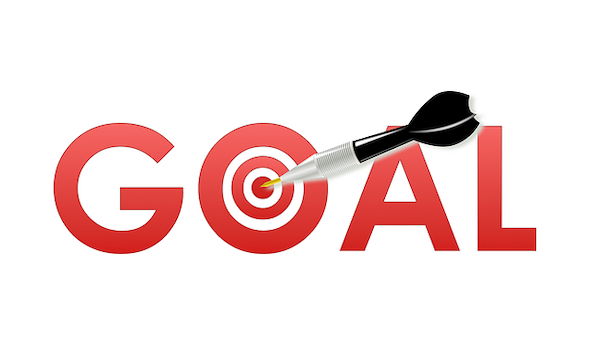Forget New Year’s Resolutions, Try a S.M.A.R.T. Goal
You should feel energized and optimistic in the new year, not uneasy with the anticipation of guilt and shame. That’s why we encourage you to ditch the resolution, and embrace a SMART goal. SMART is an acronym that represents a much better (and healthier) approach to self improvement, and it helps you tap in to the way people experience change rather than fight against it. A SMART goal is Specific, Measurable, Actionable, Realistic, and Time Bound. Let’s break down how to make a good SMART goal to help you get more fit and healthy in the new year.
A SMART Goal Should Be: 1. Specific
Think about the goal to “get healthy”, vs. the goal to “lose 5 pounds”. The second is much more specific, and less abstract and vague. To stick with a goal, you need to be able to track progress and get the emotional payout from anticipating being nearly there, and for finally reaching it. You will never wake up one day and say, “Yay, I’m healthy! I can stop now.” For one thing, that wouldn’t help you stay healthy! But if you want to lose a bit of weight, there will be a day that you wake up and say, “Yay, I did it!! What’s next?” A goal should be a mile marker on the journey, not the destination itself. As your needs and circumstances change, so should your new goals!
A SMART Goal Should Be: 2. Measurable
You need to figure out what determines success for your goal. For example, if you want to just “get organized”, how will you know when you get there? There’s no clear-cut way to measure your levels of organization–the average number of socks on the floor on any given day? The elapsed time it takes you to find your keys? Instead, pick a goal that you can measure. Luckily, there are lots of metrics that you can use to track your fitness progress and manage your goals. You can track the weight you lift on a machine, or your steps in a day, or how far you can jog. A good measurable goal would be to increase your weight on the leg press by 10% before the end of the year, or to walk 7,000 steps every day for a week straight. You’ll be more motivated and experience the payoff if you can measure when you’ve reached your goal.
A SMART Goal Should Be: 3. Actionable
A goal is just like a big project. You will become overwhelmed and paralyzed with indecision if you don’t break it down into manageable tasks. Your overall aspiration may be to become a better runner. But how do you “become” something? That’s not something you can put on a to-do list with a clear next step. Instead, start with an actionable goal like “run a 5k”, and break it down into smaller goals and mile markers until you get there. For example, your goal can be to “train twice a week with a 10 minute run”, then increase your training times and adjust your goal as you get closer and closer.
If you map it out this way, you’ll see ahead of time whether you have everything you need to get there. Do you need to download a race training app that will track your time and distance? Do you need to research your nutritional needs before the race and start making gradual diet adjustments? Do you need to make an appointment with your doctor to make sure that you are ready to tackle the race? As soon as you get overwhelmed, that’s your cue to break a goal down even further.
A SMART Goal Should Be: 4. Realistic
This aspect of your SMART goal requires some honesty and self-knowledge. The sky is the limit when it comes to your dreams and aspirations, but not all dreams make good immediate goals! For example, you can absolutely dream to be a painter one day, but it isn’t realistic to hold yourself up to the expectation to get a piece in a gallery show this month if you’ve never picked up a brush before. That’s a recipe for guilt, shame, and disappointment when you fall short.
So, how do you know when a goal is “realistic”? You have to be honest about your behaviors in the past, and take them into account when you create goals for your future. For example, if you are a busy professional and parent with the goal to work out five days a week for two hours each time, your goal may not be realistic, or even practical! But that doesn’t mean you have to just accept you’ll never be strong or healthy. Not at all! Instead, start with more attainable goals, and work to make small changes that can be built over time into reasonable habits. If you can’t block out 20 hours a week for the gym, can you block out two? Can you resolve to take the stairs to your office every day? Can you make a goal to take a jog with the stroller once a week?
Goals shouldn’t be all-or-nothing. It’s too common to think “I can’t stick to a workout regimen, so I shouldn’t even try.” That’s often because you haven’t picked a regimen or a routine that works with the realities of your busy life. That’s why Vertex Fitness offers 30 minute workouts that busy professionals can take advantage of to increase their strength and fitness without having to try to carve out crazy hours in the gym.
SMART Goal: 5. Time Bound
The final key to a good SMART goal is to make it time-bound. “Some day” is not a good motivating factor, and it’s too abstract. To stay accountable, give yourself a reasonable deadline. If you sign up for a 5k, you know when you have to finish your training to be ready for race day. You can make a goal to sign up for a personal trainer, and increase your workouts from once to twice a week after three months. You can make a goal to go on three hikes before May. A time constraint makes it real, and will clue you in on whether a goal is not specific, actionable, or reasonable enough.
To talk about your fitness challenges and goals for this year, talk with a trainer at Vertex Fitness Personal Training Studio.
Request a complimentary first session at Vertex Fitness, Voted the BEST Personal Training Studio on the Main Line
Click HERE and we will schedule a session to try it yourself
Complimentary First Workout Session









Leave a Comment